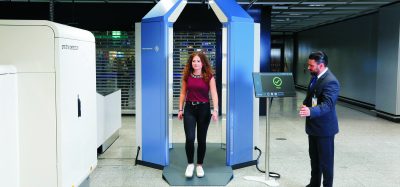Avinor’s financial challenges remain prevalent despite increase in traffic
- Like
- Digg
- Del
- Tumblr
- VKontakte
- Buffer
- Love This
- Odnoklassniki
- Meneame
- Blogger
- Amazon
- Yahoo Mail
- Gmail
- AOL
- Newsvine
- HackerNews
- Evernote
- MySpace
- Mail.ru
- Viadeo
- Line
- Comments
- Yummly
- SMS
- Viber
- Telegram
- Subscribe
- Skype
- Facebook Messenger
- Kakao
- LiveJournal
- Yammer
- Edgar
- Fintel
- Mix
- Instapaper
- Copy Link
Posted: 29 November 2021 | International Airport Review | No comments yet
Despite an increase in passenger numbers and aircraft movements during Q3, Avinor is still experiencing a significant decline in income from traffic and commercial activities for 2021.


Compared with Q2, the number of passengers increased by 123 per cent while there was a 42 per cent increase in aircraft movements.
Avinor’s operating income (including state operating subsidies) during Q3 2021 amounted to NOK 2,948 million, representing an increase of 108.5 per cent from the same period during 2020. State operating subsidies increased by NOK 900 million, while traffic income and other operating income increased by NOK 400 million and NOK 234 million respectively.
“We have seen an increase in travel activity throughout the summer and autumn as a result of the increased rate of vaccination and the easing of travel restrictions. Consequently, there has been increased traffic and commercial income in this period,” said Avinor’s CEO, Abraham Foss.
Figures for the year-to-date down
Over the course of the first nine months of 2021, traffic has fallen 19.4 per cent (passengers) and 3.1 per cent (aircraft movements) respectively when compared with the same period in 2020. This represents a sharp fall in traffic income and commercial income.
“Although we saw rising passenger numbers and aircraft movements during Q3, there is still a significant decline in income from traffic and commercial activities over 2021 as a whole due to fewer passengers and aircraft movements,” added Foss.
Over the past 12 months, punctuality averaged 92 per cent, while regularity averaged 98 per cent.
International traffic represents biggest decrease
From 1 January to 30 September 2021, Avinor’s airports handled a total passenger traffic volume across all its airports that was 67 per cent lower than the equivalent figure in 2019. The greatest decline has been at airports with international destinations.
Foss commented: “Requirements from the authorities relating to necessary documentation and infection prevention measures, testing regimes and travel restrictions, as well as airlines’ route planning will all be factors that determine when traffic stabilises at a higher level.”
Realisation of new airport projects
Work is under way to fund the new airports in Bodø and Mo i Rana. Both airports are mentioned in the Norwegian government’s draft state budget for 2022. In addition to Avinor’s funding of these projects, there will also be government and local funding.
New parking contract at Oslo Airport
Following the completion of a competitive tendering process in October 2021, Onepark was awarded the new contract to operate parking facilities at Oslo Airport (OSL). Onepark has operated the airport’s parking facilities for the last five years. The new contract will cover the period 2022 to 2027 and has an estimated value to Onepark in sales of approximately NOK two billion.
Streamlining operations
Avinor continues its efficiency work in relation to its operations in order to ensure the Group’s financial position in the longer term. The Group is scheduled to undergo a reorganisation in 2022 to coordinate resources and standardise processes. Avinor’s strategic priorities, including the level of its operating costs and investments, will be adapted to fit the long-term prognosis for the aviation industry.
In the period from 1 January to 30 September 2021, Avinor received subsidies totalling NOK 3,800 million, which were wholly recognised as grants from the state, which corresponds with the subsidies that were adopted as part of the government’s state budget for 2021.
The absence of owner subsidies during Q4 2021 may mean that the Group does not achieve equity of 40 per cent at 31 December 2021.
“We are working on measures to strengthen our equity in the longer term. This will include the continuation of cost-saving measures, reductions in investment levels and an income-generation agenda,” said Foss.
Related topics
Air traffic control/management (ATC/ATM), Aircraft, Airside operations, COVID-19, Funding and finance, In-flight activity, Passenger experience and seamless travel, Passenger volumes, Terminal operations


















